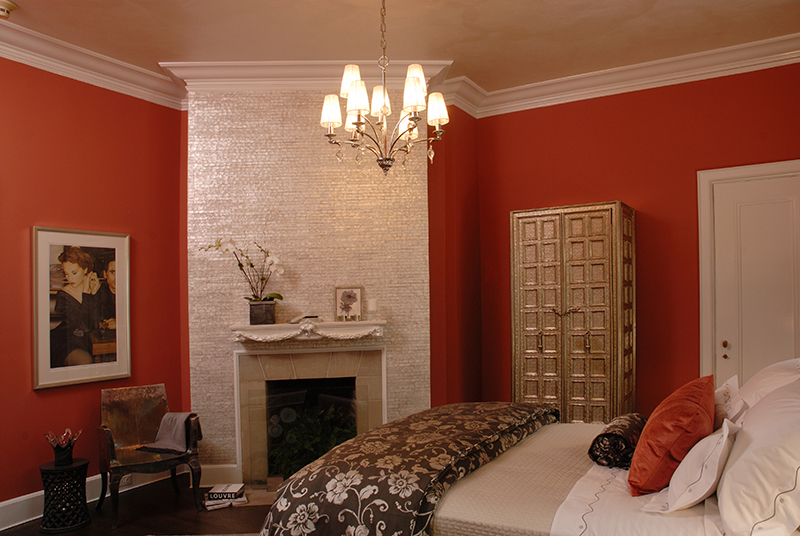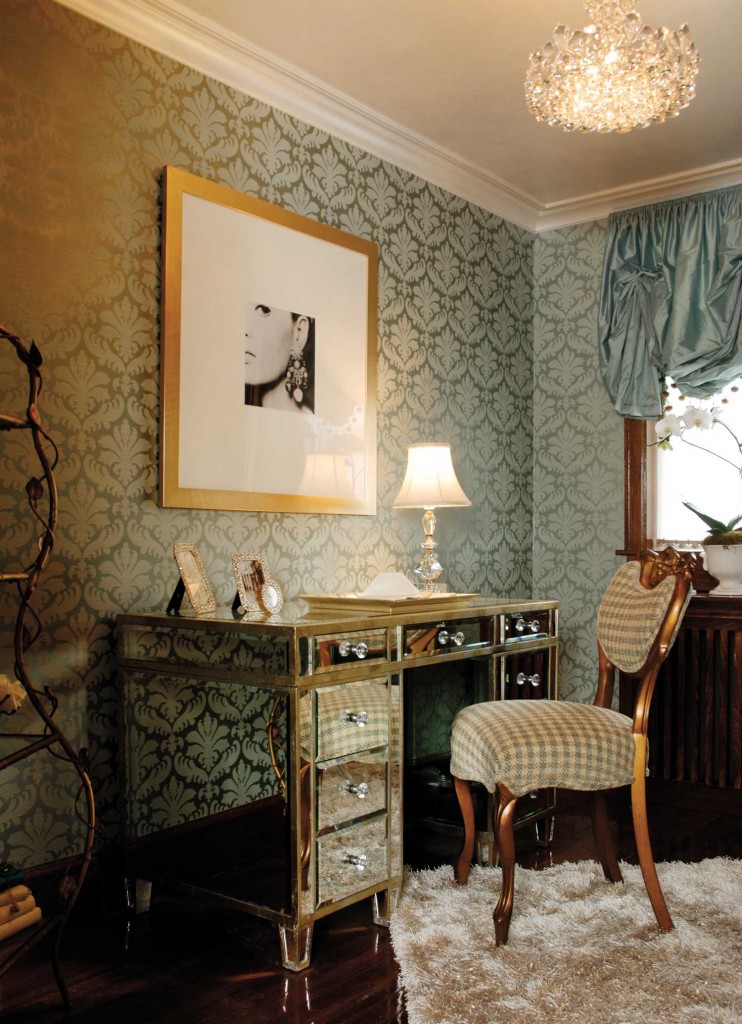Ask anyone what they remember most about Grandma’s house, and they’ll inevitably recall the ghastly wallpaper that adorned one or more rooms. But like many remnants of yesteryear, what goes around comes around. Luckily for this generation, today’s wallpaper prints are nothing like they used to be, according to Long Island-based interior designer Marlaina Teich.
Teich is a wallpaper convert. “I remember the first house I purchased; I spent hours removing layers of old wallpaper that the previous owner applied,” she says. “I swore I would never use wallpaper again.”
Her tune has since changed. “Today, wallpaper is one of the hottest trends in décor,” Teich says. “The designs and textures are so varied; it makes it simple to make a statement.”
“I think we are now past the paint and Ikea stage, and people want something bolder and singular for t heir space,” says Jee Levin, a creative director at Trove, a NYC design house she founded with Randall Buck specializing in wall coverings.
  |
“The trend to customize home furnishings and wallpaper is definitely strong right now,” says Buck. “People want to have something completely unique in their home.”
Wallpapers of the 1960s and ’70s were characterized by floral designs, geometric shapes, and metallic foils. “Let’s not forget the flocked papers, as well,” Teich adds. But today’s wallpaper is a far cry from that of 50 years ago.
“The differences in today’s [wallpaper] looks are in the colors used, as well as the play on scale,” Teich says. “Small-scale patterns are given a whole new translation by being shown in an oversized proportion. Grandma’s metallic foil paper may cause some to cringe, but when the metallic is shown as a subtle interplay with color and pattern, it can look like a piece of art.”
Wallpaper placement is as much a concern as aesthetic appeal; knowing when to go big and when to exercise restraint is key. “I love wallpaper as an accent in the bedroom, behind the headboard or in a powder room, where you can be a little crazy with color or pattern,” says Teich. She is even open to affixing wallpaper on the ceiling in the dining room, giving the space an intriguing allure.
There’s also the matter of application: Though it might sound easy enough to apply wallpaper oneself, it’s better left to a pro. The wall first needs to be prepped and smoothed to avoid bubbling. If you are applying light-colored wallpaper against a wall that has deep color, the wall needs to be primed to neutralize the darker color. “The last thing you want to do is start all over,” Levin says.


